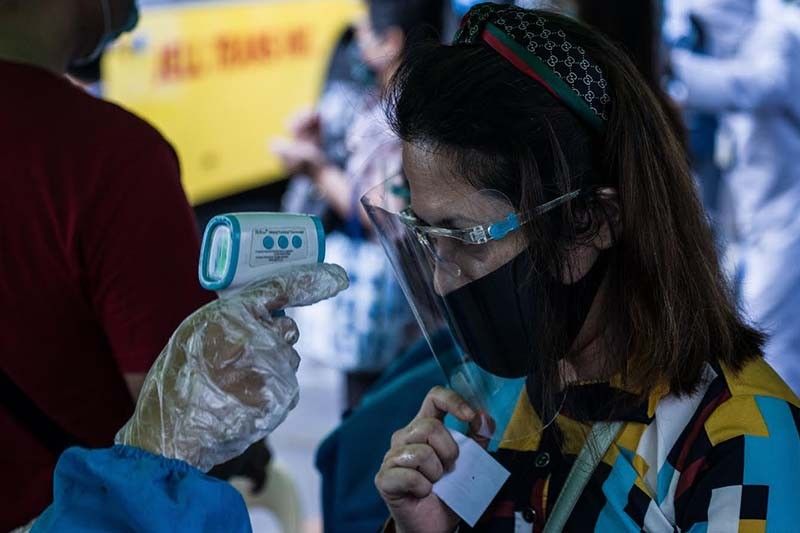Back-to-back slump narrows space to catch up on state spending

MANILA, Philippines — Time is running out for the government to catch up on spending, with October figures concluding a back-to-back drop in expenditures just when they are needed the most to revitalize an ailing economy lagging behind Southeast Asian peers.
The national government spent P289.6 billion last month, down 6.84% year-on-year and marking the second straight month of decline following a 15.5% slump the previous month, which was the largest under the Duterte administration.
Worse, spending contracted a bigger 17.5% from the previous month. The Treasury bureau, which released the data on Wednesday, pinned the blame on “base effect” supposedly coming from pension releases that apparently bloated spending last year. But figures showed, disbursements only went up a minimal 1.4% in the same period a year ago.
Another reason cited by the Treasury for low spending was dismal infrastructure outlays because of funds “realigned” to the coronavirus response as well as “delays brought about by COVID-19 lockdowns.” The agency said this was “expected,” but economic managers had also repeatedly pledged to boosting infrastructure as a stimulus measure to come out of recession.
“We expect the downtrend in spending to be sustained until year end, depriving the freefalling economy much-needed fiscal stamina to recover from the pandemic,” Nicholas Antonio Mapa, senior economist at ING Bank in Manila, said in an e-mail.
The fresh contraction in spending came as well with another 12.75% decrease in revenues to P228.2 billion. The budget deficit, which is the difference between spending and revenues, widened to P61.4 billion in October.
Data showed the government is running a record deficit of P940.6 billion in the first 10 months, with revenues down 8.4% year-on-year and expenditures up 12.8%. But a wider deficit has been the case since April, and in fact is expected to widen further to P1.82 trillion by yearend supposedly to give government space to spend for unprecedented needs during the health crisis.
With only 2 months left however, only 51.8% of the deficit cap had been exhausted, data showed.
Spending control
This is not unexpected given how economic managers have rejected repeated proposals for stronger fiscal stimulus even with typhoon damage adding to mounting problems brought by the pandemic. On top of this, agencies had been sluggish in spending funds already with them, a clear example of which was the P83 billion in unspent allocations by the social welfare department.
That was an underspending that some senators dubbed as “almost criminal” given the agency’s role in helping poor families.
In a briefing, Acting Socioeconomic Planning Secretary Karl Kendrick Chua defended anew the government approach to rely on what he called a “package” of responses that included fiscal, monetary and financial support, but the latter has yet to deliver as bank lending to enterprises and consumer grew 2.8% in September, the weakest in over 13 years.
“The size of the stimulus does not solely determine the recovery of a country,” he said, citing the case of Malaysia that contracted 17.1% year-on-year in the second quarter, worse than the Philippines’ 16.5%.
Since then however, updated data had been released to show that Malaysia economy only slumped 2.7% in the third quarter, far better than the Philippines’ 11.5%.
In the past, economic officials had also pointed to their record of catching up of spending backlog last year when a 4-month delay in enacting the budget postponed new projects until June. Indeed, that catch-up was fulfilled by yearend, with spending up 11.4% and slightly breaching 2019 target.
But at the rate 2020 is going, Emilio Neri Jr., lead economist at Bank of the Philippine Islands, said spending growth would stay at that level at a time it should have surged in the face of a crisis. “We will probably end close to 10% to 11% (growth) by yearend, similar with 2019,” he said.
“Because November and December have higher base, bigger declines (are) expected for the balance of the year due to floods and absence of legislation to support additional calamity and T3 (testing, tracing and treating) funds,” Neri said in a tweet.
With weak government intervention, Mapa said the economy would be at the losing end. “One thing for sure, 4Q GDP (gross domestic product) will now more likely post a more severe downturn from the -11.5% 3Q GDP showing as the economy lacks momentum,” he said.
- Latest
- Trending































